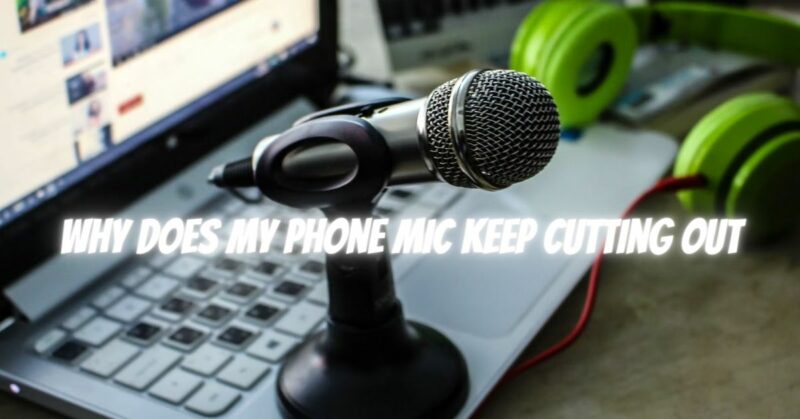Microphones are vital tools for various applications, from communication to content creation. However, encountering detailed issues with your microphone can be frustrating and hinder your ability to capture clear audio. In this troubleshooting guide, we will explore common microphone issues and provide step-by-step solutions to help you resolve them. By following these techniques, you can get your microphone back to optimal performance and ensure high-quality sound capture.
- No Sound or Microphone Not Working:
If you’re experiencing a complete absence of sound or your microphone is not working at all, follow these steps to identify and resolve the issue:
- Check physical connections: Ensure that the microphone is securely connected (if external) or not obstructed (if built-in) on your device.
- Adjust microphone settings: Verify that the microphone is not muted or disabled in your device’s sound settings. Enable it if necessary.
- Test with different apps: Try using the microphone with different applications or recording software to determine if the issue is app-specific.
- Software and driver updates: Keep your device’s software and audio drivers up to date. Check for updates and install them if available.
- Restart your device: Sometimes, a simple restart can fix temporary glitches and restore microphone functionality.
- Low Volume or Weak Microphone Output:
If you’re experiencing low volume or weak audio from your microphone, consider the following troubleshooting steps:
- Adjust microphone sensitivity: Check the microphone sensitivity or gain settings in your device’s audio settings. Increase the sensitivity to boost the volume if it’s set too low.
- Optimal microphone placement: Ensure you’re speaking directly into the microphone and are within the recommended distance. Adjust your positioning accordingly.
- Minimize background noise: Record in a quiet environment to reduce background noise interference. Consider using noise-canceling techniques or a noise-isolating microphone.
- Clean the microphone port: If using an external microphone, check for any debris or obstructions in the microphone port or grill. Clean it gently using compressed air or a soft brush.
- Distorted or Muffled Audio Quality:
If your microphone is producing distorted or muffled audio, try the following troubleshooting steps:
- Check for physical damage: Inspect the microphone for any physical damage. Look for dents, cracks, or loose connections. If damaged, seek professional assistance or consider replacing the microphone.
- Stable network connection: If using VoIP or streaming applications, ensure a stable and reliable network connection. Unstable connections can lead to audio distortion.
- Test with different apps: Use different apps or software to determine if the issue is specific to a particular application. If the problem persists across various apps, it may be a hardware or driver-related issue.
- Update software and audio drivers: Keep your device’s software and audio drivers up to date. Visit the manufacturer’s website to download and install the latest updates.
- Disable audio effects or enhancements: Disable any audio effects or enhancements in your device’s audio settings that may be causing distortion.
- Background Noise or Echo:
To reduce background noise or echo while using your microphone, follow these troubleshooting steps:
- Quiet recording environment: Record in a quiet environment with minimal ambient noise. Choose a space away from fans, appliances, or other sources of background noise.
- Adjust microphone sensitivity: Fine-tune the microphone sensitivity or gain settings in your device’s audio settings. Experiment with different levels to find the optimal balance.
- Disable or adjust AGC settings: If available, disable or adjust the Automatic Gain Control (AGC) settings. AGC can sometimes be overly aggressive, resulting in unwanted background noise amplification.
- Use acoustic treatments or a pop filter: Consider using acoustic treatments, such as foam panels or diffusers, to minimize echoes and reverberation in your recording space.
Resolving detailed issues with your microphone requires a systematic approach and troubleshooting techniques. By following the steps outlined in this guide, you can identify the root cause of the problem and take appropriate measures to resolve it. Whether you’re dealing with no sound, low volume, distorted audio, or background noise, the key is to check physical connections, adjust settings, update software and drivers, and create an optimal recording environment.
Remember, if the issue persists even after attempting these troubleshooting steps, it may indicate a hardware problem or require further assistance. In such cases, contacting the manufacturer’s support team or consulting a professional technician is recommended. With persistence and the right approach, you can overcome microphone issues and enjoy crystal-clear audio recordings for your communication, content creation, and recording needs.


